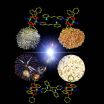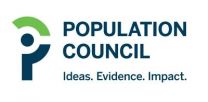(Press-News.org) A team of international scientists led by Professor Jagadese J Vittal of the Department of Chemistry at the National University of Singapore's (NUS) Faculty of Science has successfully unraveled the chemical reaction responsible for propelling microscopic crystals to leap distances up to hundreds of times their own size when they are exposed to ultraviolet (UV) light.
This popping effect, akin to the bursting of popcorn kernels at high temperatures, demonstrates the conversion of light into mechanical motion. It is the first instance of a "photosalient effect" driven by a photochemical reaction in solids to be reported. The rare phenomenon provides a new way to transfer light energy into mechanical motion, and potentially offers a fresh approach to harness solar energy to power light-driven actuators and mechanical devices.
These novel findings were published as the cover story in the English version of German scientific journal Angewandte Chemie International Edition on 2 June 2014.
Popcorn-like explosion of tiny crystals demonstrated
The NUS team has been actively looking for ways to control the reactivity of solids. While studying the metal complex polymerisation in the solid state, Mr Raghavender Medishetty, a PhD candidate, and Ms Bai Zhaozhi, a third-year undergraduate student, of the Department of Chemistry at the NUS Faculty of Science, found that very tiny crystals leap violently when exposed to UV light. Interestingly, even when the crystals are irradiated with weak UV light, the single crystals burst violently to travel up to hundreds of times their sizes. Such a distance is equivalent to that of a human jumping few hundred metres.
To understand the reactions behind the self-actuation of the crystals, the NUS team worked with a research team from the New York University Abu Dhabi led by Associate Professor Panče Naumov to capture the rapid motion of the crystals with an optical microscope coupled to a high-speed camera. They also collaborated with a research team from the Max Plank Institute for Solid State Research in Germany, led by Professor Robert E. Dinnebier to model the kinetics by time-resolved powder X-ray diffraction methods.
Through the use of a variety of analytical methods, the researchers discovered that the cause for the popping and disintegration of these single crystals was due to the strain generated during the photochemical reaction in the crystal, leading to the formation of metal coordination polymers. Sudden expansion of volume during this reaction results in the release of the stress in the form of ballistic events. Such a chemical reaction is very similar to the popping of corn kernels on a hot plate as a result of rapid expansion of the inner kernel compared to the outer shell.
Elaborating on the findings, Prof Vittal said, "Photoactuated movements are induced by the application of light to certain type of crystals, but they are observed to be less efficient than the biomechanical motions of plant and animal tissues. In our work, we observed that the conversion of energy in the crystals may be able to mimic the motility of biological systems and provide a new way to transfer light energy into mechanical motion."
He added, "Our work validates that the so called "bad" UV light from sources such as the sun can be utilised to convert chemical reactions to drive mechanical motions with practical uses. Knowledge and application of such behaviour is very important towards addressing the global energy crisis."
This study opens doors for further studies into materials for alternative energy conversion.
Further research
The NUS research team is examining a series of new compounds to better understand the mechanism and enhance the efficiency of the photosalient effect. They are also conducting systematic studies to look into the effects of chemical modification on the photosalient effect.
The team hopes to eventually develop new materials that could convert solar energy effectively into mechanical energy. In addition, the team also hopes to leverage on the principle of the photosalient effect to create a new source of reversible chemical energy by controlling the shape and size of crystals used for energy conversion.
INFORMATION: END
NUS scientists demonstrate rare chemical phenomenon to harvest solar energy
Landmark study opens doors to further studies into chemical modification of materials for alternative energy conversion
2014-06-02
ELSE PRESS RELEASES FROM THIS DATE:
Half of pregnant women who have hypertension and snore unknowingly have a sleep disorder
2014-06-02
ANN ARBOR, Mich. — 1 in 2 hypertensive pregnant women who habitually snore may have unrecognized obstructive sleep apnea, a sleeping disorder that can reduce blood oxygen levels during the night and that has been linked to serious health conditions, new University of Michigan-led research shows.
One in four hypertensive pregnant women who don't snore also unknowingly suffer from the sleeping disorder, according to the study that appears in the British Journal of Obstetrics and Gynecology.
"We know that habitual snoring is linked with poor pregnancy outcomes for both ...
Marijuana use is associated with impaired sleep quality
2014-06-02
DARIEN, IL – A new study suggests that marijuana use is associated with impaired sleep quality.
Results show that any history of cannabis use was associated with an increased likelihood of reporting difficulty falling asleep, struggling to maintain sleep, experiencing non-restorative sleep, and feeling daytime sleepiness. The strongest association was found in adults who started marijuana use before age 15; they were about twice as likely to have severe problems falling asleep (odds ratio = 2.28), experiencing non-restorative sleep (OR = 2.25) and feeling overly sleepy ...
Even at infancy, human can visually identify objects that stand out: York U study
2014-06-02
TORONTO, June 2, 2014 — Even by three months of age, babies are visually able to locate objects that stand out from a group, a York University study has found.
"For example, an infant can pick a red umbrella in a sea of grey ones," says Psychology Professor Scott Adler in the Faculty of Health, who led the research. "This indicates that babies at a very young age are able to selectively extract information from the environment, just like adults."
Previously it was unknown how early this form of visual attention developed in infants. For the current study, both infants ...
MRSA rates varied dramatically across geographic areas
2014-06-02
LOS ANGELES – (June 2, 2014) – The rates of community-onset methicillin-resistant Staphylococcus aureus (CO-MRSA) varied dramatically among academic medical centers in California, New York, Illinois and North Carolina, suggesting there is not a uniform change in the "national epidemic" of the "superbug" that has generated extensive public health concern over the past decade, according to a new study.
The study, published online ahead of print in the journal Clinical Infectious Diseases, surveyed hospital records of 4,171 cases of MRSA and MRSA-related infections between ...
Enzyme used in antidepressants could help researchers develop prostate cancer treatments
2014-06-02
LOS ANGELES (May 30, 2014) – An international team of scientists including researchers at the Cedars-Sinai Samuel Oschin Comprehensive Cancer Institute and the University of Southern California found that an enzyme commonly used as a target for antidepressants may also promote prostate cancer growth.
The study, published in the Journal of Clinical Investigation, found that suppressing the enzyme monoamine oxidase A, or MAOA, may reduce or even eliminate prostate tumor growth and metastasis in laboratory mice. The finding could open the door for physicians to use antidepressants ...
Virus rounds up enzymes, disarms plant
2014-06-02
University of Tokyo researchers have described how a plant-virus protein suppresses an important plant defense mechanism that remembers viral genetic information, providing a new target for developing the first-ever chemical against plant viruses that globally cause more than $60 billion of crop losses each year.
Invading viruses carry genetic material that hijacks the host cell's machinery, fooling it into producing proteins and new viruses. All cells from fungi to plants and mammals employ RNA silencing, a cellular process essential for the regulation of gene expression ...
New Population Council research presented at 13th ESC Annual Congress
2014-06-02
LISBON, PORTUGAL (31 May 2014) – This week, the Population Council presented new research at the 13th Congress of the European Society of Contraception and Reproductive Health. Presentations included a pharmacokinetic analysis of the Council's investigational one-year contraceptive vaginal ring containing Nestorone® and ethinyl estradiol, and its investigational male contraceptive implant MENT®, as well as new approaches to "green contraception," including strategies to ensure that future contraceptive technologies are both effective and protect the environment.
"The ...
Clinical trial shows drug combination may be effective in recurrent ovarian cancer
2014-06-02
VIDEO:
Dr. Joyce Liu talks about her clinical trial showing drug combination may be effective in recurrent ovarian cancer.
Click here for more information.
CHICAGO –– Significant improvement with the use of a combination drug therapy for recurrent ovarian cancer was reported at the annual meeting of the American Society of Clinical Oncology (ASCO) meeting in Chicago today. This is the first ovarian cancer study to use a combination of drugs that could be taken orally. The ...
New data shows ProMark accurately predicts aggressive prostate cancer, pathology outcomes
2014-06-02
CAMBRIDGE, Massachusetts, June 2, 2014 – Today, for the first time, Metamark presents results from the clinical validation study that showed ProMark™, the first and only proteomic-based imaging biopsy test, achieved its primary endpoint by accurately differentiating between aggressive and non-aggressive forms of prostate cancer at early stages of disease. ProMark™ was shown to predict which patients have low-risk disease with a sensitivity of 90 percent or better, confidently identifying patients who are appropriate for active surveillance or need aggressive therapy. The ...
Study shows tale of 2 prognoses in pediatric brain tumor, pilocytic astrocytoma
2014-06-02
Pilocytic astrocytoma (PA) is a primarily pediatric brain tumor caused mainly by mutations in the BRAF gene. In fact, there are two specific mechanisms for activation of BRAF implicated in PA formation: by fusion of the gene with nearby gene KIAA1549 (K:B fusion) or by point mutations of the BRAF gene itself. Research presented at the American Society for Clinical Oncology (ASCO) Annual Meeting 2014 used a newly designed test for K:B fusion to show that point mutations lead to a more dangerous form of the disease than does K:B fusion.
"Overall, the prognosis for Pilocytic ...
LAST 30 PRESS RELEASES:
Why nail-biting, procrastination and other self-sabotaging behaviors are rooted in survival instincts
Regional variations in mechanical properties of porcine leptomeninges
Artificial empathy in therapy and healthcare: advancements in interpersonal interaction technologies
Why some brains switch gears more efficiently than others
UVA’s Jundong Li wins ICDM’S 2025 Tao Li Award for data mining, machine learning
UVA’s low-power, high-performance computer power player Mircea Stan earns National Academy of Inventors fellowship
Not playing by the rules: USU researcher explores filamentous algae dynamics in rivers
Do our body clocks influence our risk of dementia?
Anthropologists offer new evidence of bipedalism in long-debated fossil discovery
Safer receipt paper from wood
Dosage-sensitive genes suggest no whole-genome duplications in ancestral angiosperm
First ancient human herpesvirus genomes document their deep history with humans
Why Some Bacteria Survive Antibiotics and How to Stop Them - New study reveals that bacteria can survive antibiotic treatment through two fundamentally different “shutdown modes”
UCLA study links scar healing to dangerous placenta condition
CHANGE-seq-BE finds off-target changes in the genome from base editors
The Journal of Nuclear Medicine Ahead-of-Print Tip Sheet: January 2, 2026
Delayed or absent first dose of measles, mumps, and rubella vaccination
Trends in US preterm birth rates by household income and race and ethnicity
Study identifies potential biomarker linked to progression and brain inflammation in multiple sclerosis
Many mothers in Norway do not show up for postnatal check-ups
Researchers want to find out why quick clay is so unstable
Superradiant spins show teamwork at the quantum scale
Cleveland Clinic Research links tumor bacteria to immunotherapy resistance in head and neck cancer
First Editorial of 2026: Resisting AI slop
Joint ground- and space-based observations reveal Saturn-mass rogue planet
Inheritable genetic variant offers protection against blood cancer risk and progression
Pigs settled Pacific islands alongside early human voyagers
A Coral reef’s daily pulse reshapes microbes in surrounding waters
EAST Tokamak experiments exceed plasma density limit, offering new approach to fusion ignition
Groundbreaking discovery reveals Africa’s oldest cremation pyre and complex ritual practices
[Press-News.org] NUS scientists demonstrate rare chemical phenomenon to harvest solar energyLandmark study opens doors to further studies into chemical modification of materials for alternative energy conversion






